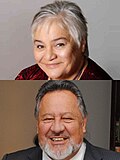
Back Eleccions generals neozelandeses de 2011 Catalan Elecciones generales de Nueva Zelanda de 2011 Spanish Élections législatives néo-zélandaises de 2011 French Elezioni generali in Nuova Zelanda del 2011 Italian Парламентские выборы в Новой Зеландии (2011) Russian 2011 New Zealand general election SIMPLE
| ||||||||||||||||||||||||||||||||||||||||||||||||||||||||||||||||||||||||||||||||||||||||||||||||||||||||||||||||||||||||||||||||||
All 121 seats in the House of Representatives, including one overhang seat 61 seats needed for a majority | ||||||||||||||||||||||||||||||||||||||||||||||||||||||||||||||||||||||||||||||||||||||||||||||||||||||||||||||||||||||||||||||||||
|---|---|---|---|---|---|---|---|---|---|---|---|---|---|---|---|---|---|---|---|---|---|---|---|---|---|---|---|---|---|---|---|---|---|---|---|---|---|---|---|---|---|---|---|---|---|---|---|---|---|---|---|---|---|---|---|---|---|---|---|---|---|---|---|---|---|---|---|---|---|---|---|---|---|---|---|---|---|---|---|---|---|---|---|---|---|---|---|---|---|---|---|---|---|---|---|---|---|---|---|---|---|---|---|---|---|---|---|---|---|---|---|---|---|---|---|---|---|---|---|---|---|---|---|---|---|---|---|---|---|---|
| Opinion polls | ||||||||||||||||||||||||||||||||||||||||||||||||||||||||||||||||||||||||||||||||||||||||||||||||||||||||||||||||||||||||||||||||||
| Turnout | 2,278,989 (74.21%) | |||||||||||||||||||||||||||||||||||||||||||||||||||||||||||||||||||||||||||||||||||||||||||||||||||||||||||||||||||||||||||||||||
| ||||||||||||||||||||||||||||||||||||||||||||||||||||||||||||||||||||||||||||||||||||||||||||||||||||||||||||||||||||||||||||||||||
 Results by electorate, shaded by winning margin | ||||||||||||||||||||||||||||||||||||||||||||||||||||||||||||||||||||||||||||||||||||||||||||||||||||||||||||||||||||||||||||||||||
| ||||||||||||||||||||||||||||||||||||||||||||||||||||||||||||||||||||||||||||||||||||||||||||||||||||||||||||||||||||||||||||||||||
The 2011 New Zealand general election took place on Saturday 26 November 2011[1] to determine the membership of the 50th New Zealand Parliament.
One hundred and twenty-one MPs were elected to the New Zealand House of Representatives, 70 from single-member electorates, and 51 from party lists including one overhang seat. New Zealand since 1996 has used the Mixed Member Proportional (MMP) voting system, giving voters two votes: one for a political party and the other for their local electorate MP. A referendum on the voting system was held at the same time as the election,[2] with voters voting by majority to keep the MMP system.[3]
A total of 3,070,847 people were registered to vote in the election, with over 2.2 million votes cast and a turnout of 74.21%[4] – the lowest turnout since 1887.[5] The incumbent National Party, led by John Key, gained the plurality with 47.3% of the party vote and 59 seats, two seats short of holding a majority. The opposing Labour Party, led by Phil Goff, lost ground winning 27.5% of the vote and 34 seats, while the Green Party won 11.1% of the vote and 14 seats – the biggest share of the party vote for a minor party since 1996. New Zealand First, having won no seats in 2008 due to its failure to either reach the 5% threshold or win an electorate, made a comeback with 6.6% of the vote entitling them to eight seats.
National's confidence and supply partners in the 49th Parliament meanwhile suffered losses. ACT New Zealand won less than a third of the party vote it received in 2008, reducing from five seats to one. The Māori Party was reduced from five seats to three, as the party vote split between the Māori Party and former Māori Party MP Hone Harawira's Mana Party. United Future lost party votes, but retained their one seat in Parliament.
Following the election, National reentered into confidence and supply agreements with ACT and United Future on 5 December 2011,[6][7] and with the Māori Party on 11 December 2011,[8] to form a minority government with a seven-seat majority (64 seats to 57) and give the Fifth National Government a second term in office.
- ^ a b "Key confirms election date". The New Zealand Herald. 2 February 2011. Archived from the original on 9 January 2014. Retrieved 5 May 2011.
- ^ "MMP referendum to be held with 2011 election". The New Zealand Herald. 20 October 2009. Archived from the original on 19 March 2012. Retrieved 20 October 2009.
- ^ "Overall Results – 2011 Referendum on the Voting System". Electoral Commission. 10 December 2011. Archived from the original on 16 June 2020. Retrieved 25 September 2021.
- ^ "Party Votes and Turnout by Electorate – Statistics – 2011 General Election". Electoral Commission (New Zealand). Archived from the original on 4 February 2020. Retrieved 25 September 2021.
- ^ Otago Daily Times "Decision 2011":Election Special Issue, 28 November 2011, p. 2.
- ^ "Dunne, Banks secure ministerial roles in coalition deals". Television New Zealand. 5 December 2011. Archived from the original on 14 February 2012. Retrieved 5 December 2011.
- ^ "Dunne, Banks get Govt roles". The New Zealand Herald. 5 December 2011. Archived from the original on 7 December 2011. Retrieved 5 December 2011.
- ^ "Key finalises Maori coalition deal". Television New Zealand. 11 December 2011. Retrieved 11 December 2011.
© MMXXIII Rich X Search. We shall prevail. All rights reserved. Rich X Search







